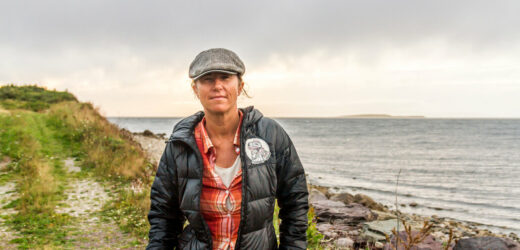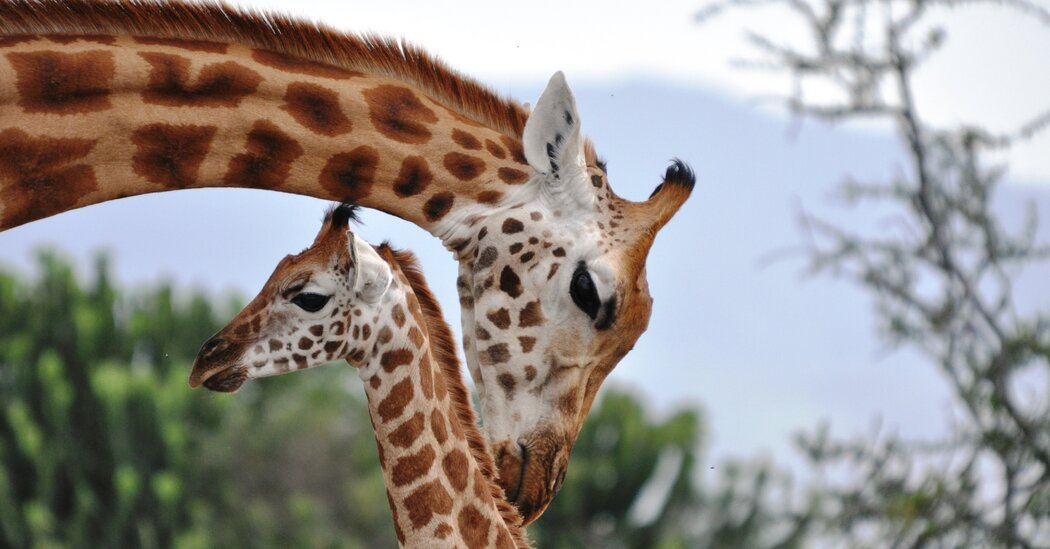In 2015, the independent Canadian filmmaker Dianne Whelan set out on what is now known as the Trans Canada Trail, a nearly 17,000-mile recreational trail that spans green paths, roads and waterways from the Atlantic to the Pacific and north to the Arctic Ocean. On Aug. 1, in the company of her parents, partner and friends, Ms. Whelan, 56, walked the last few feet to become the first person to complete the continuous trail (minus a few spur trails) that links all three oceans by land and water. She plans to produce a documentary, “500 Days in the Wild,” detailing her six-year experience.
As the director of documentaries on the base camp of Mount Everest and an expedition in the Arctic, Ms. Whelan had experienced extreme climates. But the Trans Canada Trail proved a test of her mental and emotional strength, as well as her physical perseverance, including encounters with bears, paddling thousands of miles solo and eating incalculable quantities of oatmeal. Until the pandemic, her journey included stops along the way, often in Indigenous communities, where she collaborated with other artists. For the last year and a half, she’s done it alone, with the help of her partner, Louisa Robinson, who supplied provisions.
A few days before finishing the trail, she hauled her canoe on shore on the Sunshine Coast of British Columbia, where she is normally based, just north of Vancouver, to talk about her adventure. The following are excerpts from the conversation, edited for clarity.
What made you decide to do the entire trail?
As a storyteller, I really loved the metaphor of the trail being this umbilical cord that connected us all. When I left, I thought everything we need to know we had forgotten as a culture, at least in Western culture. That somehow, we had lost our connection to the web of life and to the future. I called it an ecological pilgrimage.
What forms of transportation did you use?
About 10,000 kilometers (more than 6,200 miles), I paddled. I paddled Lake Superior. I paddled from Alberta up to the Arctic Ocean. And right now, I’m on the Salish Sea. When I’m not paddling, I’m on land trails. Old rail lines are great because they never have a steep incline. In winter, I snowshoed or cross-country skied, pulling a sled. Some of it was dirt roads and, in those cases, I’ve ridden a mountain bike. I’ve been able to do these things because of human kindness. It was just meeting people, sharing the story, and people were like, “Hey, Uncle Joe is driving that way, he can take your canoe.” It was very grassroots. I learned this beautiful story from an elder in the Mi’kmaq Indigenous community, Danny Paul, who said we’re kind of like trees. On the surface, every tree looks like it stands alone. Beneath the surface all the trees in a forest are connected.
How did you manage being alone for so long? Were you out there continuously?
I like to say solitude reveals what a mirror cannot. I left with fear like any woman going out in the woods might feel. But because that fear was never substantiated, that fear eventually went away. It was a very humbling experience; certainly, paddling Lake Superior is just so humbling to feel like such a fragile being out alone on these vast waters. Something ancient woke up in me and all of a sudden, I started feeling more connected to life than I ever had. I wasn’t on the water paddling, I was with the water paddling. You’re reminded that humans are actually .001 percent of life on Earth, and we’re part of this incredible web of life. The only things I never grew an affection for were the ticks and the black flies.
Since leaving, home has been the trail. In the first few years, I tried to go through winter. One of the elders I’d met, a Cree woman, wrote me and said, we didn’t travel in winter. That’s when you create art, share stories, make food. After I got that bit of wisdom, I was off trail about five weeks this winter. It’s never about athletic achievement. It’s like the old tale of the rabbit and the turtle. The turtle completes the journey. The rabbit burns itself out. I dropped the rabbit suit and put on the turtle shell.
Are you super fit? How did you prepare?
I did some training but not in a super crazy way. I did some daily hikes of up to 10 kilometers with some weight on my back. I just started the journey slow. I prepared also by taking a “bush medic” course so that in the event of getting hurt out here, I could attend to myself. You are getting in shape as you go. I keep waiting for that super fit thing to happen.
How does this journey compare to other extreme adventures you’ve done?
They are all about the infusion of traditional Indigenous wisdom with science and technology to take people through danger to safety. What’s great about science and technology is, yes, we have these amazing satellite phones and GPSs and high-tech stuff. But when you’re like 200 miles from the North Pole and you hit a hurricane and it’s minus 80 out, all that technology stops working and at that point it’s the wisdom of the elders that keeps you alive — because it’s their understanding and relationship to the land and their experience that has been passed on to them through multiple generations. Everest was the exact same thing: Very few get up that mountain without a Sherpa. I have great hope that if we blend traditional Indigenous wisdom with science and technology that we can find sustainable ways to live with the Earth and all life on the Earth.
Do you ever want to see oatmeal or trail mix again?
I won’t be eating oatmeal ever again in my life. Ever. Throughout the day, I had a snack bag with trail mix and dried fruit and cheese and crackers and nuts. And of course, chocolate, and I have a soft spot for gummy bears. Dinner was instant noodles, pasta, carbs. At the beginning, I was nervous about bears and trying to keep a clean camp. I met many, many, many bears and 98 percent were kind and wonderful to watch. I never carried anything but bear spray for most of the journey. When I went to the high Arctic, I carried a gun and had to use it once because I had a bear come into my camp. My partner was with me. She picked up the gun and fired a couple of warning shots and we quickly packed off into the canoe and realized we didn’t spill our coffee.
Indigenous Children Vanished in Canada
The remains of what are presumed to be Indigenous children have been discovered at the sites of defunct boarding schools in Canada. Here’s what you should know:
- Background: Around 1883, Indigenous children in many parts of Canada were forced to attend residential schools in a forced assimilation program. Most of these schools were operated by churches, and all of them banned the use of Indigenous languages and Indigenous cultural practices, often through violence. Disease, as well as sexual, physical and emotional abuse were widespread. An estimated 150,000 children passed through the schools between their opening and their closing in 1996.
- The Missing Children: A National Truth and Reconciliation Commission, set up as part of a government apology and settlement over the schools, concluded that at least 4,100 students died while attending them, many from mistreatment or neglect, others from disease or accident. In many cases, families never learned the fate of their offspring, who are now known as “the missing children.”
- The Discoveries: In May, members of the Tk’emlups te Secwepemc First Nation found 215 bodies at the Kamloops school — which was operated by the Roman Catholic Church until 1969 — after bringing in ground-penetrating radar. In June, an Indigenous group said the remains of as many as 751 people, mainly children, had been found in unmarked graves on the site of a former boarding school in Saskatchewan.
- Cultural Genocide: In a 2015 report, the commission concluded that the system was a form of “cultural genocide.” Murray Sinclair, a former judge and senator who headed the commission, recently said he now believed the number of disappeared children was “well beyond 10,000.”
- Apologies and Next Steps: The commission called for an apology from the pope for the Roman Catholic church’s role. Pope Francis stopped short of one, but the archbishop of Vancouver apologized on behalf of his archdiocese. Canada has formally apologized and offered financial and other search support, but Indigenous leaders believe the government still has a long way to go.
Source: Read Full Article


